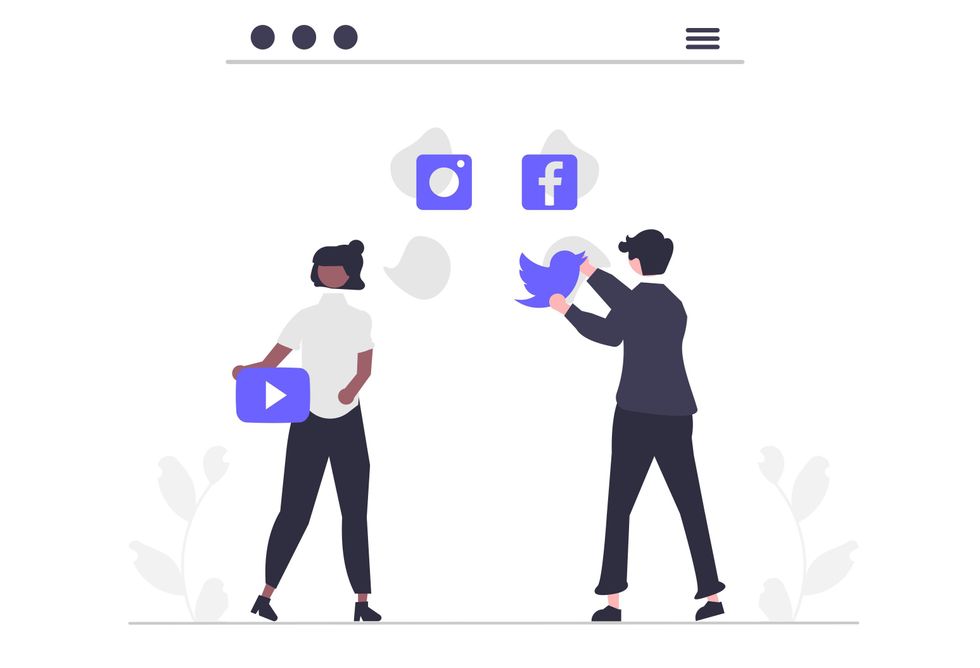
The recruitment landscape is poised for continued transformation in 2024, shaped by technological advancements, evolving workforce expectations, and global dynamics. To stay ahead of the curve, organizations must adapt their recruiting strategies.
In this article, members of Duffy Group will explore pivotal topics that are reshaping today's workforce landscape. Discover effective succession planning strategies to help you navigate the challenges of an aging workforce, uncover insights into managing the influx of younger talent, learn techniques to keep your team connected to the company culture in an era of remote collaboration, and find out how to use AI to complement your recruiting strategy.
Read on to unlock the best tips for elevating your recruitment strategy in 2024.
Colleen Neese
January is a time of year when we all get a chance to start the new year with new perspectives, renewed energy, and the lessons learned from the previous year. It's a time to reflect on what has worked and what hasn't, and an opportunity to focus on what's proven to work in the past to create a better future. It is vital to look towards the future as well. Succession planning is something that has been proven to help organizations be more successful.
What is "succession planning"? It's the process of identifying the critical positions within your organization and developing action plans for individuals to assume those positions. The critical steps of succession planning include:
- Identify key positions '' This includes knowing which are the most critical positions in the company and knowing if there are any upcoming changes to those roles. Are there any upcoming retirements? Are there signs that a person may be leaving? Which roles are the hardest to fill? Which positions would cause an issue if the person were to leave unexpectedly?
- Provide professional development opportunities
- Cross-train employees '' Providing cross-training to employees can help with immediate unexpected openings and can help to develop employees' skills for continued growth. Providing leadership training and coaching helps prepare the future leaders of your organization.
- Build a strong talent pipeline '' It's important to build that pipeline now so you have candidates in case of an unexpected critical opening.
- Conduct ongoing assessments of the succession plan '' This is an ever-changing area that needs to be reviewed regularly to identify gaps and needs.
Proactive and effective succession planning can bring many advantages, including reduced risk of leadership gaps, better culture of engaged employees, and an overall improvement in organizational performance.
Colleen Neese is a practice leader at Duffy Group. She specializes in recruiting executives in non-profit and healthcare.
Sharon Grace

Bridging the Workforce Gap: Navigating Development for Incoming Youth Amidst the Departure of Experienced Workers
A common theme I experienced from 2020 to 2023 was the influx of experienced workers, primarily baby boomers, Generation X, and some Generation Y, leaving the workforce and the growth of the younger population or Generation Z entering the workforce.
For the most part, Generation Z was welcomed with open arms. Depending on the industry, the range of open arms varied based on the shortage stemming from retirements, re-careering, and people stepping back from working full time to take a break and care for their families.
I have not experienced this trend in my two decades of recruiting. There also hasn't been a focus on work-life balance until now, and I am thankful for how accepted it has become. We all worked and worked more to learn and grow with a steady path to advance into management roles.
As an executive recruiter, I have partnered with several clients to help them hire leaders to replace incumbents in the past few years during this recent shift. What I have experienced over and over is how anemic the leadership tool pool is overall, regardless of demographics or geographics.
Why is this? Have we missed the mark on the continuous development of young leaders? Has work-life balance taken a priority due to caregiving needs at home? Did baby boomers and Generation X paint a gloomy picture, deterring interest? Is the current young generation focused more on a job today than a career path journey as prior generations did? I think yes, yes, yes, and yes.
What do you do? I believe excellent career path opportunities are available now, and many more to come in the next several years. When I was young in my career, we didn't have leadership coaches and training classes and seminars to the level we have today. For this, I think it's an excellent opportunity for young professionals to raise their hands and ask for continuous development. If you are a leader, this is a great time to pay it forward and mentor and develop.
I changed professions in 2000 and took off my manager hat for a while to learn a new career from a mature young woman in her late twenties, Jill, who was ahead of her time. I was lucky, and to this day, I can say that she was the best manager I have ever had. She made learning hard things fun and easy. She was inspirational, and everyone wanted to follow her. We didn't feel like we were working, while our work was challenging. She was identified as a top performer on a fast track to leadership. She was given additional tools to continue growing as a leader, and her team grew alongside her.
I know other young Jills are starting their careers today, and we missed some over the past decade. Let's all look for a Jill beginning with the interview process. Let's explore, be curious, and be more of a career coach instead of someone who only asks standard interview questions. Changing our mindsets to find skills and traits for a future leader to groom, instead of for today's open job, we should have many new Jills in the talent pool to fill the continuous open leadership roles in the upcoming years.
Sharon Grace is a veteran search executive at Duffy Group who helps hiring leaders hire great people because of her proven track record as a strategic partner and advisor to recruit, identify, and assess talent.
Kristin Pozen

Welcome to the forefront of modern recruitment practices in 2024. We are marked by unprecedented technological advancements, the evolution of hybrid work environments, and a need to emphasize creating meaningful connections within the workforce.
AI won't completely replace you as a recruiter, but recruiters who use AI could. 2024 will witness more recruiting and staffing firms turning to automation to simplify repetitive tasks and reduce administrative work.
Recruitment automation solutions can parse resumes, manage candidate and client pipelines, post jobs on multiple job boards simultaneously, and much more. Many software solutions also help efficiently engage candidates at various hiring stages while improving important recruitment metrics like time to hire and submittal.
- Automate candidate screening '' Screening a massive quantity of candidates is a tedious task. With automation, pre-screen your candidates. You can, for example, send them the set of questions you want them to answer. You can also introduce language assessment tests if your job requires language frequency. You can then watch the pre-recorded interviews at your convenience and easily compare candidates.
- Automate tracking applicants '' Use staffing automation to post job listings automatically to relevant job boards and on social media sites, including LinkedIn, Indeed, Glassdoor, etc. Automate tracking the applicants throughout the process of hiring with an ATS (applicant tracking software).
- Automate communication '' Not being able to communicate timely with the candidates is the main reason behind a poor candidate experience. For the candidate, a new job hunt is stressful and taxing, and they expect transparency during the process. Instead, automate your communication with campaigns and trigger-based emails/texts to reach out to your candidates and keep them updated with their status in the recruiting process.
- Automate interview scheduling '' Use staffing automation to simplify interview scheduling and allow candidates to schedule interviews at their preferred time. With software like Calendly, you can offer candidates the available time slots. This will allow candidates to schedule or reschedule interviews at their preferred time without interrupting your team's workflow.
In 2024, the stabilization of hybrid work takes center stage, prompting a reevaluation of workplace structures and the adoption of innovative ways to support remote collaboration. Remote-work numbers have dwindled over the past few years as employers issue return-to-office mandates. But will that continue in 2024?
In Spring 2020, more than 60% of the workforce worked from home. By 2023, that number had dropped to about 25% ' much lower than its peak but still a significant increase from 5% in 2019. Work-from-home numbers have held steady throughout most of 2023.
Though several companies issued return-to-work mandates in 2023, most allow employees to work from home for at least part of the week. That makes 2024 the year for employers to figure out the hybrid model.
- Expect remote work numbers to remain flat in 2024, then pick back up '' Hybrid work will become the new normal. But hybrid work will not be a one-size-fits-all-all. Each company, position, and employee may have performance standards to meet to make hybrid sustainable.
- Better work-from-home technology '' Improved technology also will help remote work figures rebound. Ensuring your remote workers have the tools at home to do their jobs, fast internet, and quiet space to focus are essential. More companies are investing in remote-work-enabling technology this year, like state-of-the-art rooms built for Zoom meetings, with privacy glass that hides the screen from passersby. We might even see holograms and virtual reality devices to help remote employees connect.
- Redesigned office spaces '' Companies may use the new year to redesign office space to make employees' time in the office more efficient. Utilize building spaces to facilitate brainstorming sessions and enhance collaboration and social interaction.
- A new take on office building continues '' More cities may look at easing zoning laws and other regulations to make it easier to convert empty office space into apartment buildings, which could help revitalize city centers and ease the national housing shortage.
Hybrid work, the Great Resignation, and the pandemic can all take the blame for an increase in unconnected employees in today's workplace. Workers with lower levels of connection have a stronger intention to quit and a higher chance of job-seeking'which is expensive for a business's bottom line. If embraced by the executive team and developed by the general workforce, reconnection is possible.
- Ensure that everyone has the opportunity to connect, regardless of where they are located.
- Make connecting easier through interactive technologies (i.e., Slack, RingCentral, MS Teams, and other messaging apps).
- Be intentional about connecting employees outside of their teams. Make it a once-a-week event for casual connection and a once-a-quarter or annual event for more formal L&D or strategy planning.
- Are your mental health benefits being utilized? If not, ensure your employees know they are available and confidential. Do they need to be enhanced to provide more coverage or more access?
- Make onboarding more experiential. Onboarding is a critical first opportunity to facilitate friendships at work. Since the pandemic, millions of employees have started new jobs and have never met one of their colleagues in person. Especially for early career employees, this can be incredibly challenging.
- Make recharging a reality. We must take employee health seriously for human connection and friendship to thrive. We can start by supporting more generous family leave policies, child care, and elder care. Also, ensure that when taking time off, employees recharge by not answering emails and phone calls. They can truly check out for a week at a time.
Taking a step to build connections within the workplace can be done by any employee. Reaching out to a co-worker through a call, email, or text message to check in makes an impact. Let''s make 2024 the year to build stronger connections within your organization.
Kristin Pozen is a research recruitment recruiter at Duffy Group and a former HR recruiter.
Need help recruiting talent for your organization? Check out Duffy Group today.





















